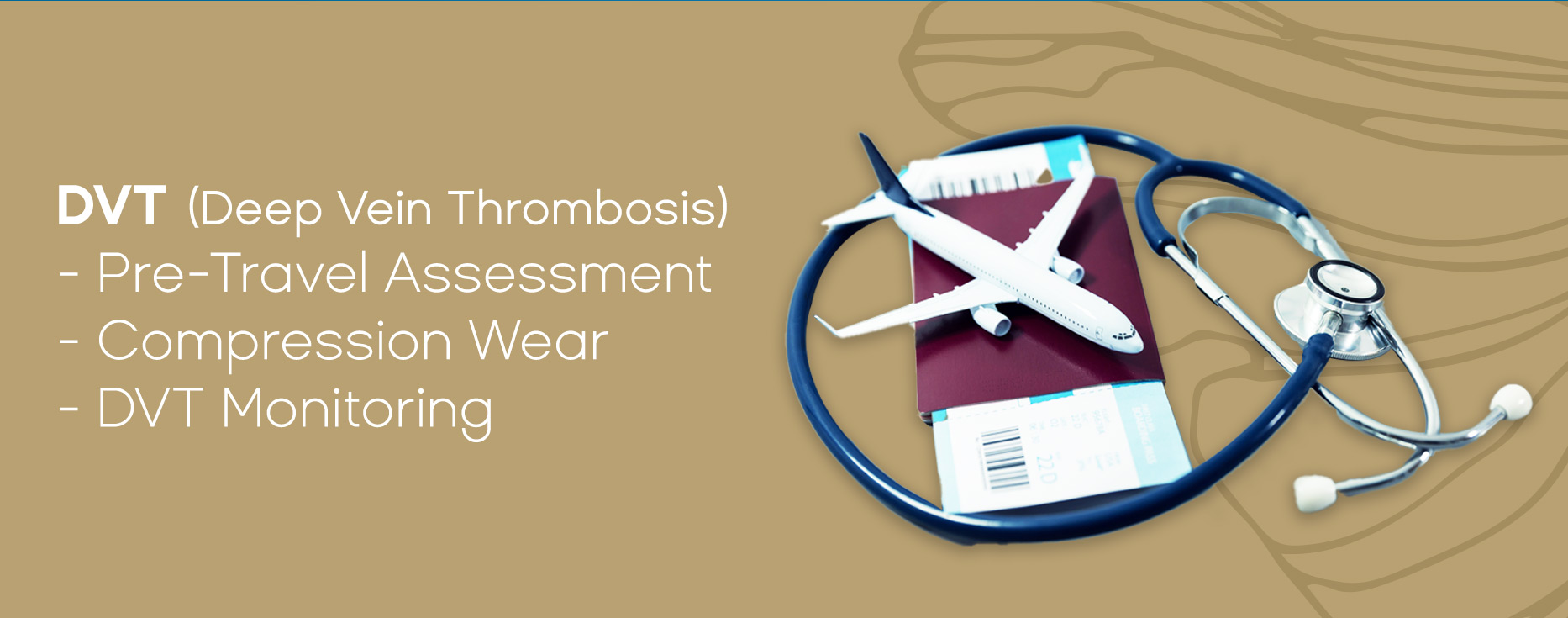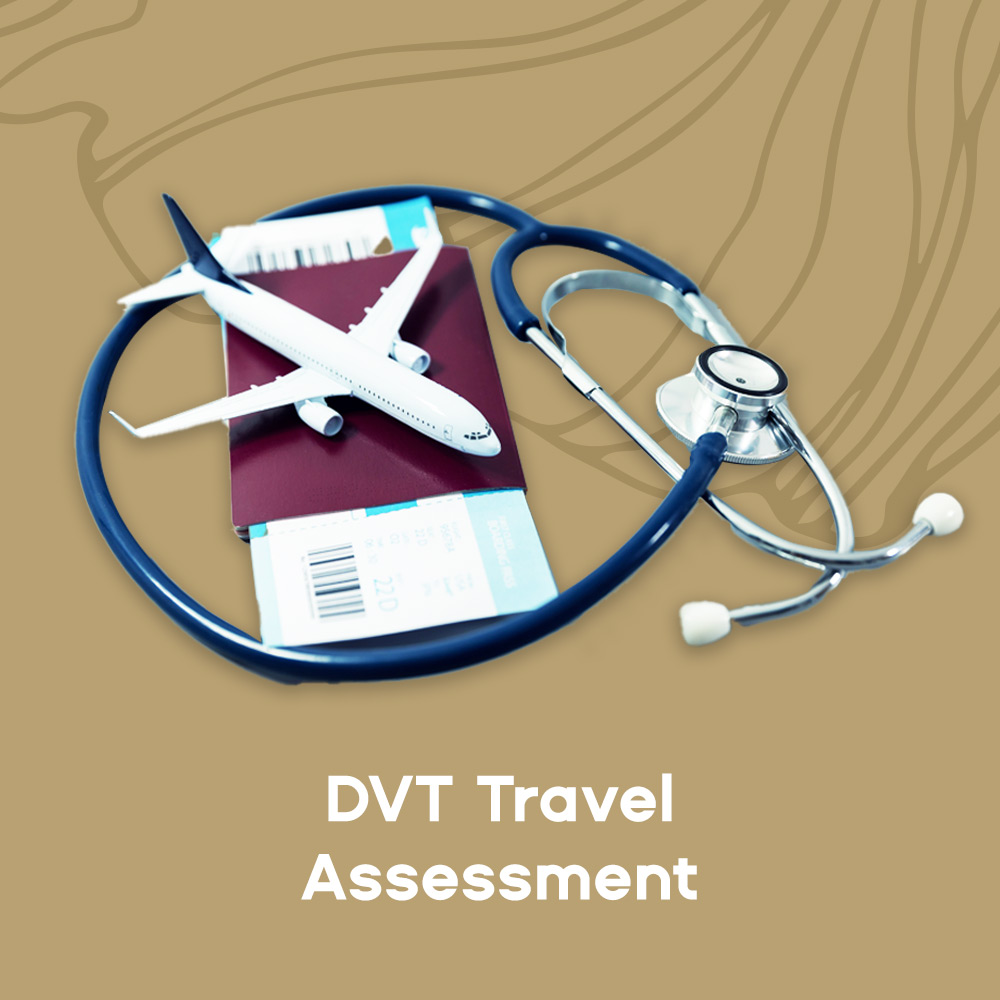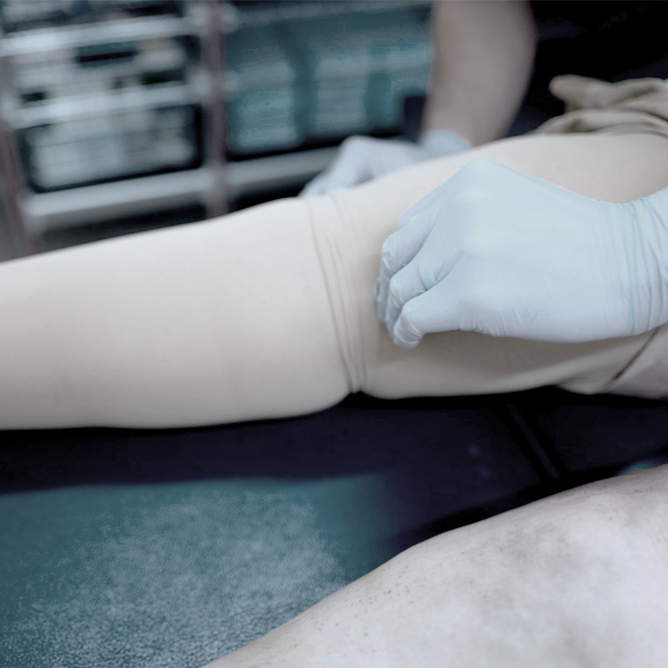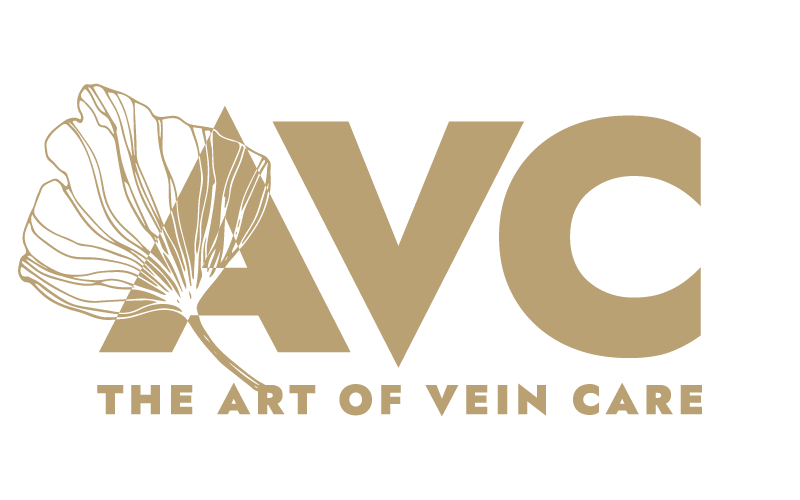Deep Vein Thrombosis (DVT)


What is Deep Vein Thrombosis DVT?
- Deep vein thrombosis (DVT), also called venous thrombosis, is the formation of a blood clot in one or more of the deep veins in the body.
- The clot may partially or completely block blood flow through the vein, potentially causing serious health effects.
- While DVTs may occur in the arms, brain, intestines, liver or kidney, most DVTs occur in the lower legs, thighs or pelvic area.
- Deep vein thrombosis can develop from anything that slows or occludes blood flow through the deep veins.
- It can also occur after surgery or an accident, or when you’re confined to a bed or have limited movement fora long time.
- Conditions that can increase your risk of a DVT include being overweight, inherited conditions that increase the risk of blood clots, pregnancy and the first six weeks after giving birth.
- Cancer and some of its treatments also increase the risk of DVT.
- Untreated DVT can be life-threatening as blood clots can break free and travel through the bloodstream.
- They can then become lodged in the blood vessels of the lung, blocking blood flow and resulting in a pulmonary embolism.
What causes Deep Vein Thrombosis?
The three main causes of DVT are:
- Injury to the vein wall, such a trauma or car accident
- A change in the blood flow often caused by varicose veins that can change blood flow from “smooth” to “turbulent”. The flow may also become sluggish when people spend a long timebedridden.
- When the blood becomes sticky which can be caused by cancer or dehydration
Flying is not a cause per se, but a combination of 2 and 3 above, – eg sedentary position and dehydration which makes the blood stickier.
What are the symptoms of Deep Vein Thrombosis?
Signs and symptoms may include:
- Swelling of the lower leg or arm (sometimes this happens suddenly)
- Pain and tenderness in the affected leg that can often be felt in the calf area
- Red or discolored skin
- A feeling of warmth in the swollen area
- Pain on extending the foot
- The veins near the skin’s surface may be larger than normal
- A Deep Vein Thrombosis usually forms in one leg or one arm. There is rarely swelling in both legs or arms.
- About 1 in 3 DVTs are symptomless and it’s important to remember that whilst most people with DVT survive, more than 6% die from Pulmonary Embolism complications (a clot that travels to the lungs – so it is important to be aware of PE symptoms).
What are the symptoms of pulmonary embolism (pulmonary embolus)?
A pulmonary embolus is clot that has travelled to the lung, often from the leg or sometimes the pelvic or another part of the body.
- Rapid heartbeat
- Sudden shortness of breath or fast breathing
- Sharp chest pain and discomfort that often comes with coughing or taking a deep breath
- Feeling dizzy, light-headed or fainting
- Coughing up blood
- Sweating more than normal
It is important if you have these symptoms you seek prompt medical attention and do not self diagnose.
What are the treatments for Deep Vein Thrombosis?
- The main goal of treatment is to prevent the clot from extending, breaking off and travelling to your lungs.
- Treatment also aims to reduce the risk of another blood clot and prevent long-term complications from the clot (chronic venous insufficiency).
- Treatments for DVT may include medications such as anticoagulants (“blood thinners”). Anticoagulants do not destroy clots however, they do stop clots from getting bigger and therefore help prevent blood clots from moving.

What is the prognosis for Deep Vein Thrombosis?
- In about a third of cases the clots completely resolve over time, and the more timely the treatment, the more likely that will happen.
- Another third of cases develop a hole through the middle of the clot (recanalisation) and these patients need permanent compression stockings.
- In the remaining third of patients, the clot incorporates into the vein wall, shrivels up and are mostly stable after a few weeks.
- All DVT patients should be re-scanned when anticoagulants are stopped.
- These scans should check for valve function, in order to decide long-term whether the patient needs ongoing compression stockings.
- Compression socks should be used short-term in all DVT patients to reduce swelling in the legs.
- If the valves are damaged as a result of the clot then long-term compression stockings need to be used.
- In addition, exercising your lower leg muscles if you are sitting still for long periods of time or standing up and walking for a few minutes every hour while awake, as well as, avoiding activities that may cause serious injuries, may all help improve circulation and decrease swelling.
